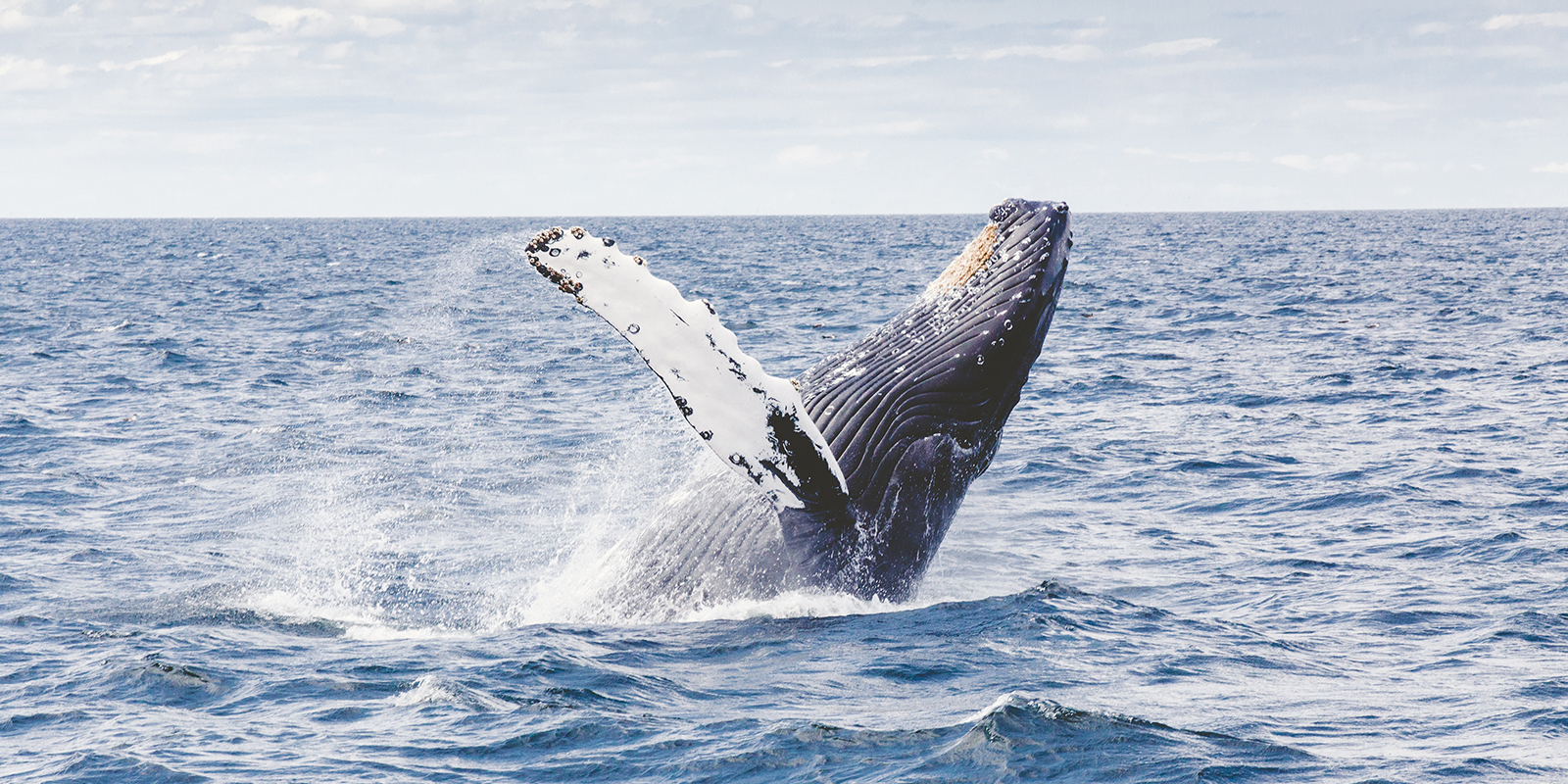Breaking new ground and building understanding — through whale earwax

History is embedded in, of all places, whale earwax.
Scientists have long examined the layers found in a whale’s earwax to determine its age (not unlike the rings found on a tree), but it wasn’t until two Baylor professors learned you could also learn more about their environment through earwax research that we realized just how many stories the 10-inch plugs could tell.
Dr. Stephen Trumble, associate professor of biology, and Dr. Sascha Usenko, associate professor of environmental science, broke new ground in 2013 when they pioneered a technique for analyzing whale earplugs and used it to uncover whales’ exposure to pollutants and other man-made stressors.
Now, they’ve followed up that project with another first-of-its-kind study: an examination of whale stress responses over the last 150 years. The latest research, which paints a picture of marine mammal reactions to events like whaling and World War II, also reveals the ways whales respond to pollutants and changes in climate.
Trumble and Usenko examined fin, humpback and blue whale earwax samples acquired from 1870 through 2016 for the project, searching for cortisol, a stress-response hormone. After recording cortisol levels found in whales through the years, they compared that knowledge with historical data of human activity in oceans to see if there were any connections.
Not surprisingly, cortisol levels spiked during the years with highest whaling activity. But even as whaling was at an ebb in the 1940s, whale stress continued to show up at a high rate. The Baylor researchers say that time period corresponds with the large-scale oceanic traffic and human activity of World War II.
Even in recent years, with Northern Hemisphere whaling activity reportedly ceased, cortisol levels (and the incumbent stress they represent) continue to climb. Trumble and Usenko suggest that, as “sentinels of their environment,” these species of whales are particularly sensitive to warming sea temperatures and other human-based stressors.
Just as it was with their first groundbreaking study, interest in the current research is high. They admit there’s a certain curiosity that comes from the “gross factor” of their research, but it goes far beyond that. Long-form articles have already appeared in Smithsonian Magazine, National Geographic and The Atlantic, with scientists around the world interested in opportunities to learn more and collaborate with a duo who saw the possibilities of a humble piece of earwax.
Sic ’em, Drs. Trumble and Usenko!

